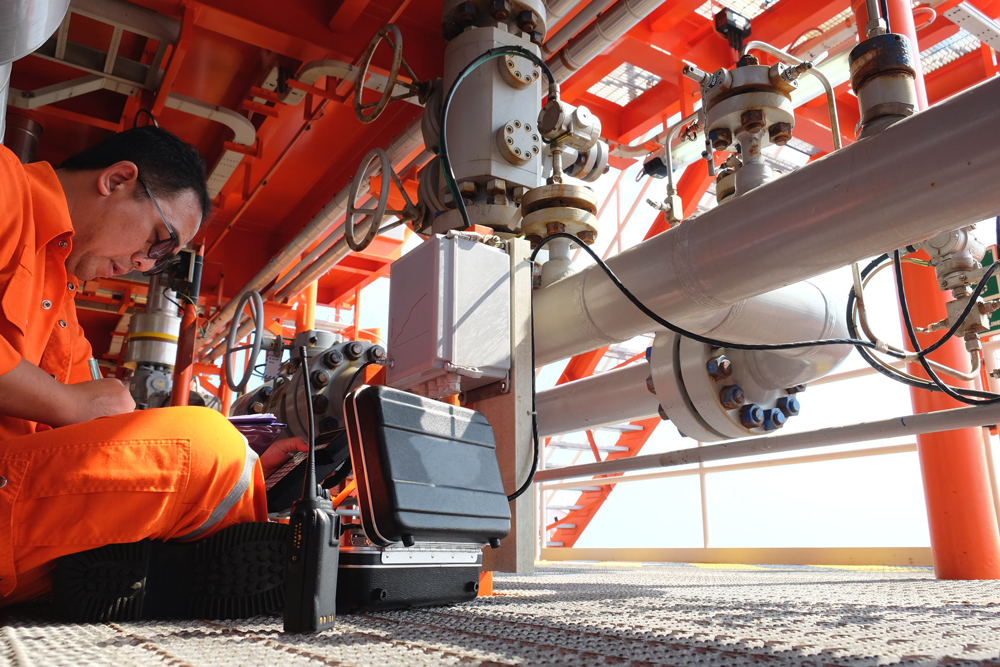May 2023, Vol. 250, No. 5
Features
Value of Advanced Sensor Capabilities in Pipeline Management
By Miguel Santiago Urrea, Director Integrity Services, and Katherine Hartl, Pipeline Integrity Engineer, NDT Global
(P&GJ) — For companies in the energy sector, optimizing systems and processes can bring as much growth as does innovating new products and services. Such optimization typically involves eliminating inefficient or unreliable steps in business systems and processes – a practice sometimes referred to as “getting the barnacles off the boat.”
In other cases, it may involve mergers or acquisitions to achieve efficiency savings or refining and enhancing existing infrastructure to gain additional operational efficiencies.
From our direct experience with customers, we know many energy companies with large pipeline networks seek ways to secure more value from their infrastructure, especially in how they manage it on a regular basis. For these companies, the ideal model for a pipeline is for it to be 100% productive, all of the time, with no downtime – ever.
The reality is quite different. Pipeline systems operate in some of the most demanding environments on the planet, both on land and underwater. They have machinery that breaks, and the pipes themselves are subject to a multitude of different threats.
Some of these threats are geological, like seismic movements, surface soil erosion, river crossings, and backfill. Others are related to manufacturing, such as production errors, which could lead to leaks and degradation of material strength. Regardless of the nature of the threat, each one needs to be identified, monitored, and addressed.
As part of this effort, operators must implement extensive maintenance assessment programs and inline diagnostics solutions to maintain pipeline integrity.
The key to assuring this integrity is comprehensive visibility of the pipeline’s condition so that issues can be identified at the earliest opportunity and repaired as part of a systematic and planned maintenance program that can be scheduled with the needs of the business in mind.
Maintenance Programs
Historically, maintenance programs centered around inspection platforms that traveled hundreds of miles of pipeline. These platforms were equipped with sensors that assessed the integrity of pipework using ultrasonic scanning or acoustic resonance, for example.
The results collected by these sensors were data-poor. Rather than providing predictive or preventive insights, they were only reactive in nature. Decisions often had to be made without enough information, leading to stoppages or slowdowns in product flow that ultimately had a negative impact on the business.
More recently, however, this model has evolved, presenting challenges and opportunities to pipeline operators and their service providers. Today, the best technology and diagnostics solutions provide significantly more accuracy with higher-quality, actionable data.
Diagnostic inspection providers have invested heavily in their platforms, significantly increasing the extent and granularity of data they can collect.
Advanced sensor capabilities allow them to detect and diagnose a higher number of minor pipeline anomalies as small as a millimeter in depth while providing operators with advance warning of potential issues. This process also gives operators better insights into their pipeline integrity.
The best sensor capabilities are driving substantial growth in the volume of data collected to the point where powerful AI is now being brought to bear in combination with human analysts’ expertise. This shift is driving the adoption of advanced data diagnostics in pipeline management and changing how operators and their industry partners use the data they collect.
The relationship between inspection platforms, data, and analytics is also changing. In the past, the inspection tool was often regarded as the most critical part of the process.
Now, it is the power of the resulting data-driven insights that define the quality of a diagnostic evaluation, given the massive volumes of data collected and smart tools like machine learning that empower analysts to accurately assess threats and flaws and make data-driven decisions.
Consequently, the interpretation of reports and the highly sophisticated analysis outputs provide much more business value today than was once the case.
At NDT Global, our people are at the core of our business value – both driving the science and innovation behind our technology platforms and expertly deploying and pulling data from those tools to deliver the power of clarity.
By leveraging ultrasonic and non-ultrasonic technologies, such as inertial measurement and others in development, we have the ability to accurately diagnose cracks, dents, damage, corrosion, and any other threats or anomalies, in both liquid and gas pipelines – with energy carriers such as hydrogen to come.
Let’s explore in more detail how this sensor data is collected, analyzed and disseminated.
Data Collection
The combination of long pipeline sector runs and highly granular data collection models mean that inspection platforms can collect vast volumes of data, often in the petabyte range. This data needs to be extracted, transmitted, and stored quickly, accurately, and securely, often requiring significant investment in data storage and management capabilities.
Once data has been collected and validated, data scientists can begin to analyze a data set. The extraordinary development of new analytic tool sets in recent years means the process of data management, analysis, and visualization is far less problematic than in the past, even considering the far more extensive data volumes now in everyday use.
These new tools help manage and process petabytes of information to enable more preventive and predictive decisions. This approach helps square the circle of having vastly more data to analyze without having access to significantly more – and costly – resources and expertise.
Insight
Sophisticated data analysis techniques do not eliminate the need for skilled and experienced specialists to review the results. Data-led analytic models allow engineers and other stakeholders to be more productive and assess issues more effectively, providing better guidance to senior decision-makers about the best course of action needed to maintain pipeline integrity.
More technical insight allows managers to develop business plans that maximize uptime for their pipeline network while implementing maintenance programs that assure the safety of employees and the safe operation of their infrastructure.






Comments